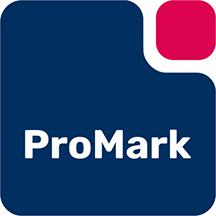ProMark Modernizes Workforce Management Solution with Progress OpenEdge


Industries:
Technology & SoftwareChallenge
ProMark is committed to modernizing their OpenEdge-based solution to meet the dynamic needs of customers.
Solution
Together, OpenEdge Version 12.2 and Kendo UI presented the company the opportunity to continue their performance enhancement journey while adding in the stability aspect with long-term support.
Result
ProMark was able to modernize their user experience, increase speed and create a slick user interface, boosting productivity by 100-150%.
Full Story
Challenge
ProMark, formerly Mark Information, is a leading Nordic vendor of an innovative Workforce Management platform that provides intelligent resource scheduling to help companies boost productivity and savings while adhering to local regulations. For over 40 years, ProMark has offered its 300,000 users advanced functionality for time and attendance reporting, absence and task management and scheduling.
As a long-time Progress® OpenEdge® customer, ProMark has remained a provider for some of the largest and most well-known brands in the world by modernizing its solution as technologies evolve.
Having used the OpenEdge platform since version 7.3, ProMark is no stranger to upgrades and modernization. “In our migration to 12.1 we primarily focused on performance gains and giving a boost to our user experience. Moving to 12.2 continues that performance journey, while adding in that stability aspect with long-term support,” said Morten Janum, CIO and Vice President of ProMark. “That is especially critical for stabilizing our larger, more complex implementations in the markets we serve.”
ProMark also sought to accelerate its migration by offering a Software-as-a-Service (SaaS) app and leveraging new OpenEdge capabilities for DevOps, continuous monitoring and integration services for customers wanting load-balancing support, fail-safe scenarios and less downtime. Version 12.2 presented the company with the opportunity to modernize the user experience with the backend.
In our migration to 12.1 we primarily focused on performance gains and giving a boost to our user experience. Moving to 12.2 continues that performance journey, while adding in that stability aspect with long-term support.
Morten Janum
CIO and Vice President, ProMark
Solution
Because today’s customers expect advanced UI/UX experiences, the team chose Progress® Kendo UI®. “The Angular type of product suite helped us bring forward some of the more data-heavy use cases we have,” said Janum. “Kendo UI components, with their richness, helped us speed up.” OpenEdge Long-Term Support (LTS) releases remain active and supported for several years and feature backward compatibility of application source code. This means that while some adjustments may be needed, existing code will work on new versions and can therefore benefit from future improvements and innovation. With new releases, customers get access to the latest technology options without needing to fully rewrite the application.
The robust backward compatibility of OpenEdge was refreshing for Janum. “The IT industry is moving so fast, fewer and fewer companies can afford to do a full rewrite of their tech stacks every time something brand new arrives.” He added, “We take a lot of our investments and bring them forward. That was the key driver. Restructuring and rewriting everything for a very large, complex application (would prevent us from) competing in our space. We like the Progress OpenEdge platform, especially in the later versions.”
The company’s migration from Classic Application Server to Progress Application Server (PAS) for OpenEdge was critical as well. “It was a key part of doing true modernization and getting into a scalable application server setup,” Janum said. “It positioned us to compete in the SaaS space and prepared us to manage the future. It was a no-brainer.” Janum said they ”got a performance boost right out of the box” and customers commented that the performance was ”like night and day.”
Security was also an important factor. As the company moved forward, it wanted its application server layer to have all the modern benefits available in the 12.2 toolbox, like enhanced security, monitoring capabilities and resiliency.
As Janum said, “Having Progress backing it with security certifications around that type of architecture is something we can piggyback with when we have customers with higher security requirements.”
Result
ProMark’s upgrade from 12.1 to 12.2 took only one month, and performance gains from the upgrade were between 100–150%.
“The most exciting part is that we now can engage in modernization discussions with large enterprises where customers have high expectations around security, they want to have real-time APIs, and build their own user interfaces on top of our application,” Janum said. “That is a great boost. Coming in with a reactive, modern interface and pairing it up with the performance is key for us,” Janum added.
Of their 400 instances running on the Progress Application Server for OpenEdge, 70% have already modernized. Each instance typically deploys one application server and two web applications, but for higher-volume solutions, they do have up to 10 instances for one web application.
Looking ahead, the ProMark team is examining how to bring their on-premises clients into a modern world of high-availability, multi-tenancy setups to offer more structured relationships with the higher service levels customers want.
The most exciting part is that we now can engage in modernization discussions with large enterprises where customers have high expectations around security, they want to have real-time APIs, and build their own user interfaces on top of our application. That is a great boost. Coming in with a reactive, modern interface and pairing it up with the performance is key for us.
Morten Janum
CIO and Vice President, ProMark